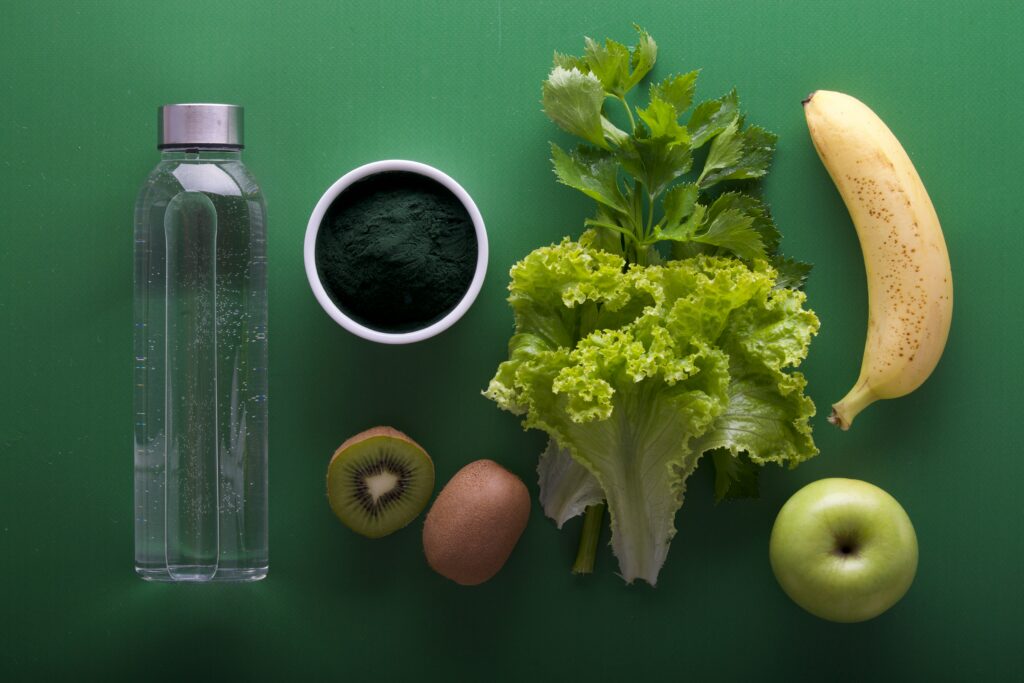Gut health is a cornerstone of overall well-being, particularly crucial for women navigating the complexities of midlife and menopause. As we age, hormonal fluctuations can profoundly affect our gut microbiome, leading to changes in digestion, nutrient absorption, and immune function. During menopause, declining estrogen levels can impact the composition and diversity of gut bacteria, potentially leading to digestive discomfort, bloating, and other gastrointestinal issues.
This blog concentrates on enhancing gut health through a balanced diet rich in prebiotics, probiotics, and high-fiber foods. By understanding how to adapt our diet to support our changing bodies, we can make significant strides toward maintaining digestive health and overall vitality during this transformative stage of life.
Understanding Prebiotics and Probiotics
Prebiotics and probiotics are foundational to our digestive wellness, serving complementary roles. Prebiotics, or fiber-rich foods, are essential for nourishing beneficial bacteria within our gut. Probiotics, meanwhile, are live beneficial bacteria present in certain foods, bolstering our gut’s microbial population.
This dynamic duo is crucial for sustaining gut health equilibrium. Importantly, the estrobolome—a set of gut bacteria related to estrogen metabolism—becomes key during menopause. Hormonal fluctuations can disrupt the estrobolome, leading to an imbalanced gut. Therefore, maintaining a diet rich in both prebiotics and probiotics is vital to support the gut bacteria and ensure overall digestive health, particularly during menopause.
Key Foods for Gut Health
Incorporating foods rich in prebiotics and probiotics is crucial for enhancing gut health. Prebiotics can be found in high-fiber foods that stimulate the growth of beneficial gut bacteria. Excellent sources include garlic, onions, asparagus, bananas, barley, apples, etc.
For probiotics, which add beneficial bacteria directly to the digestive system, consider these fermented foods : yogurt, kefir, sauerkraut, kimchi, miso, tempeh, etc.
Integrating these foods into your diet can be simple and enjoyable. Try adding garlic and onions to your favorite dishes, snack on apples, or start your day with a serving of yogurt or kefir.
Challenges in Obtaining Sufficient Probiotics
Sometimes, it can be challenging to get enough probiotics through diet alone. Factors like limited dietary choices, food availability, or specific health conditions can hinder our ability to consume a variety of probiotic-rich foods. Moreover, the quality and quantity of probiotics in foods can vary significantly based on preparation and storage methods.
Supplementing with Probiotics
Facing difficulties in getting enough probiotics from your diet? Femme Pharma’s Mia Vita Women’s Probiotic is here to help. Designed for women’s health, this vegetarian, gluten-free supplement supports a healthy gut and vaginal microbiome, combating imbalances caused by diet, antibiotics, and stress. By enhancing your diet with Mia Vita® Women’s Probiotic, you support digestion, immune function, and more.
Crafting a Fiber-Rich Menu
Breakfast: Start Your Day with Fiber
Kick off your morning with a prebiotic and probiotic-rich breakfast. A bowl of oatmeal topped with mixed berries and pumpkin seeds offers a fiber boost, while Greek yogurt or kefir provides probiotics for digestive health. Sprinkle some chia seeds or flaxseeds (crushed) for added fiber and omega-3 fatty acids. This combination sets the stage for a day filled with high-fiber foods, contributing to your overall gut health.
Scrambled Eggs and Sauerkraut Recipe
Lunch: Midday Prebiotic Power
For lunch, assemble a vibrant vegetable salad packed with fiber. Include ingredients like leafy greens, carrots, and beets. Dress it with a prebiotic-rich vinaigrette made from apple cider vinegar and olive oil to encourage healthy gut flora. Add a portion of quinoa or whole grain bread on the side for an extra fiber hit, supporting your ‘foods with fiber’ intake.
Roasted Veggie & Grain Bowl with Zesty Herb Dressing
Dinner: Probiotic-Rich Evening Meal
Dinner is the perfect time to introduce probiotics and continue your intake of high fiber foods. Prepare a hearty vegetable stir-fry with garlic, onions, and your choice of fibrous vegetables like broccoli or bell peppers. Serve alongside your favorite protein source and a generous helping of fermented foods such as kimchi or sauerkraut. These not only add a delicious zest to your meal but also include probiotics essential for gut health.
Gut-Loving Veggie Mash-Up Recipe
For a hands-on approach to boosting your probiotic intake, discover our easy-to-follow homemade sauerkraut recipe perfect for enhancing any meal with a flavorful and gut-friendly twist.
Enhance your meals with the unique zest and probiotic benefits of kimchi by trying our simple homemade kimchi, an excellent addition to your fiber-rich meal plan.
Incorporating Fermented Foods
Enhancing your meals with fermented foods like sauerkraut and kimchi is a tasty way to increase your probiotic intake. These foods not only provide a unique flavor to your dishes but also introduce beneficial bacteria to your digestive system. For those new to these ingredients, start small and gradually increase the amount to let your palate and gut adjust.
By focusing on meals rich in prebiotics, probiotics, and fibers, you’re taking significant steps toward improving your digestive health. Each meal offers a chance to support your gut, contributing to a healthier you. Remember, a balanced diet filled with fiber foods and fermented goodies can lead to long-lasting gut health and overall well-being.
